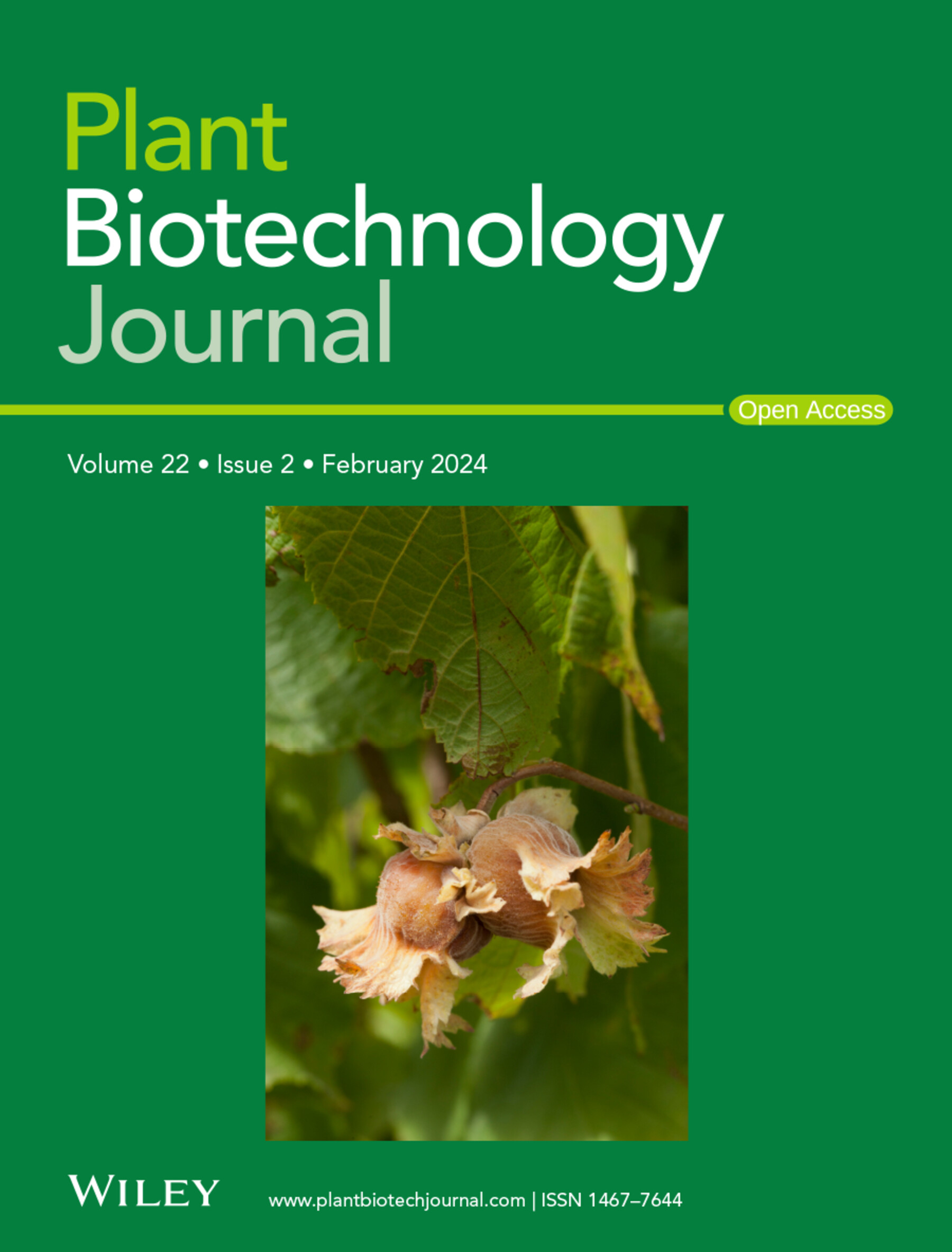LsBLH2–LsOFP6–LsKANT3 module regulates bolting by orchestrating the gibberellin biosynthesis and metabolism in lettuce
IF 10.1
1区 生物学
Q1 BIOTECHNOLOGY & APPLIED MICROBIOLOGY
引用次数: 0
Abstract
Lettuce is one of the most important vegetables worldwide. Bolting time is an important agronomic trait in lettuce production. Premature bolting reduces crop quality and marketability. Here, we genetically clone the LsBLH2 gene controlling bolting time in lettuce. LsBLH2 encodes a BEL1-like homeodomain protein. In the late bolting parent, the LsBLH2 had a 1-bp deletion in exon 1 which leads to a premature stop codon. CRISPR/cas9 knocking out and complementary tests showed that the loss-of-function of LsBLH2 delays bolting in lettuce. ChIP-seq, gene expression and phytohormone analysis showed that LsBLH2 regulates the gibberellin (GA) biosynthesis and metabolism. LsBLH2 binds to the promoter of the LsGA20ox1 and LsGA2ox8 and regulates their expression, leading to the bioactive GA accumulation during the vegetative-to-reproductive phase transition. Both LsOFP6 and LsKNAT3 interact with LsBLH2 and regulate bolting in a LsBLH2-dependent manner. LsOFP6 promotes, while LsKNAT3 suppresses the effects of LsBLH2 on GA biosynthesis during the transition and rosette stage in lettuce, respectively. In summary, the LsBLH2–LsOFP6–LsKANT3 module orchestrates bioactive GA accumulation to regulate bolting in lettuce, which provides insight into the bolting development process and offers new approaches for lettuce breeding to prevent premature bolting.求助全文
约1分钟内获得全文
求助全文
来源期刊

Plant Biotechnology Journal
生物-生物工程与应用微生物
CiteScore
20.50
自引率
2.90%
发文量
201
审稿时长
1 months
期刊介绍:
Plant Biotechnology Journal aspires to publish original research and insightful reviews of high impact, authored by prominent researchers in applied plant science. The journal places a special emphasis on molecular plant sciences and their practical applications through plant biotechnology. Our goal is to establish a platform for showcasing significant advances in the field, encompassing curiosity-driven studies with potential applications, strategic research in plant biotechnology, scientific analysis of crucial issues for the beneficial utilization of plant sciences, and assessments of the performance of plant biotechnology products in practical applications.
 求助内容:
求助内容: 应助结果提醒方式:
应助结果提醒方式:


